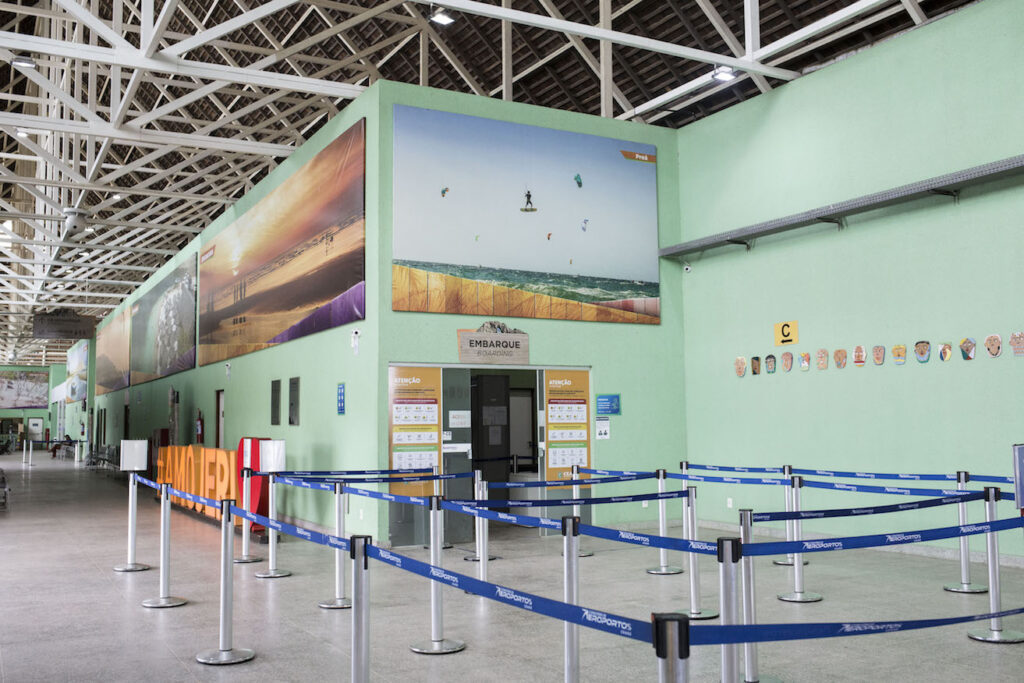Interviews
Marcus Pacobahyba (Jericoacoara Airport): From the Skies to Jeri
13:22 19 de November de 2022 Por Daniel Oiticica

Marcus Pacobahyba, Manager of Airport Operations Programs at Jericoacoara Airport
Inaugurated in 2017, Jericoacoara airport was designed to strengthen one of the main activities that generate investments for the region. Lower costs and reduced travel time to reach the city are some of the benefits that operating the airport has provided for the region. In this interview, Marcus Pacobahyba, manager of Airport Operations Programs at Jericoacoara Airport, details the numbers that illustrate the growth of its activities, as well as projections for the future of the enterprise.
How did Jericoacoara Airport come about?
It came about with the idea of leveraging tourism in the region. The city of Jericoacoara, 283.4 km from Fortaleza, is distant for land access. So, the possibility of easily arriving there was created through a regional airport, not the same size as Fortaleza, which is an international airport, but an airport with a large transport capacity. One of the main reasons was to leverage the development of the region, which has a strong tourist appeal. Construction began in 2011 and the project was completed in 2017. The inaugural flight took place on June 24, 2017.
How is the airport operating today?
From 2017 until today, the airport has grown a lot. The initial capacity of the development was around 200,000 passengers per year. It has been growing rapidly, even with a small slowdown during the pandemic. The numbers are very encouraging. In the first six months of operation, it handled 30,000 passengers between landings and takeoffs. In 2018, that number increased to 96,000, an increase of more than 50% over the previous period. In 2019, another increase, this time to 113,000. With the pandemic in 2020, the volume slowed to around 56,000 passengers. Meanwhile, in 2021 there were 155,000 passengers. Now, in 2022, up until August, the airport has transported 213,000 passengers. The initial capacity of 200 thousand passengers a year has already been exceeded at this time as tourism has resumed.
How is the airport structured?
Its runway is large, considered very good, with landing capacity for large aircraft and an extension of 2.2 thousand meters by 45 meters wide. We have all the equipment for 24-hour operations, for landing even in bad weather conditions. We have a well-equipped patio that can hold three large aircraft and eight executive models at the same time. The passenger terminal boarding and disembarkation area has around 3.5 thousand square meters, capable of easily attending the services offered by the enterprise.
With the growing numbers, are there any expansion projects planned?
We are planning alterations to the passenger departure terminal to facilitate movement when three or more aircraft arrive simultaneously. Today, we operate with only up to two planes simultaneously.
What can investors arriving in the Jericoacoara region expect from the airport? Thinking a little about our audience, what would you say to investors in the tourism sector in that region, who will need to use this airport? What’s positive?
The airport is fully capable of serving investors who want to leave their vehicles safely, being able to board and disembark several flights. We currently serve, on average, 20 weekly flights, with conditions to receive flights from various parts of the country. To investors, we can say that there are no restrictions on arrivals and departures from the airport.
